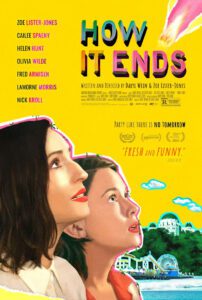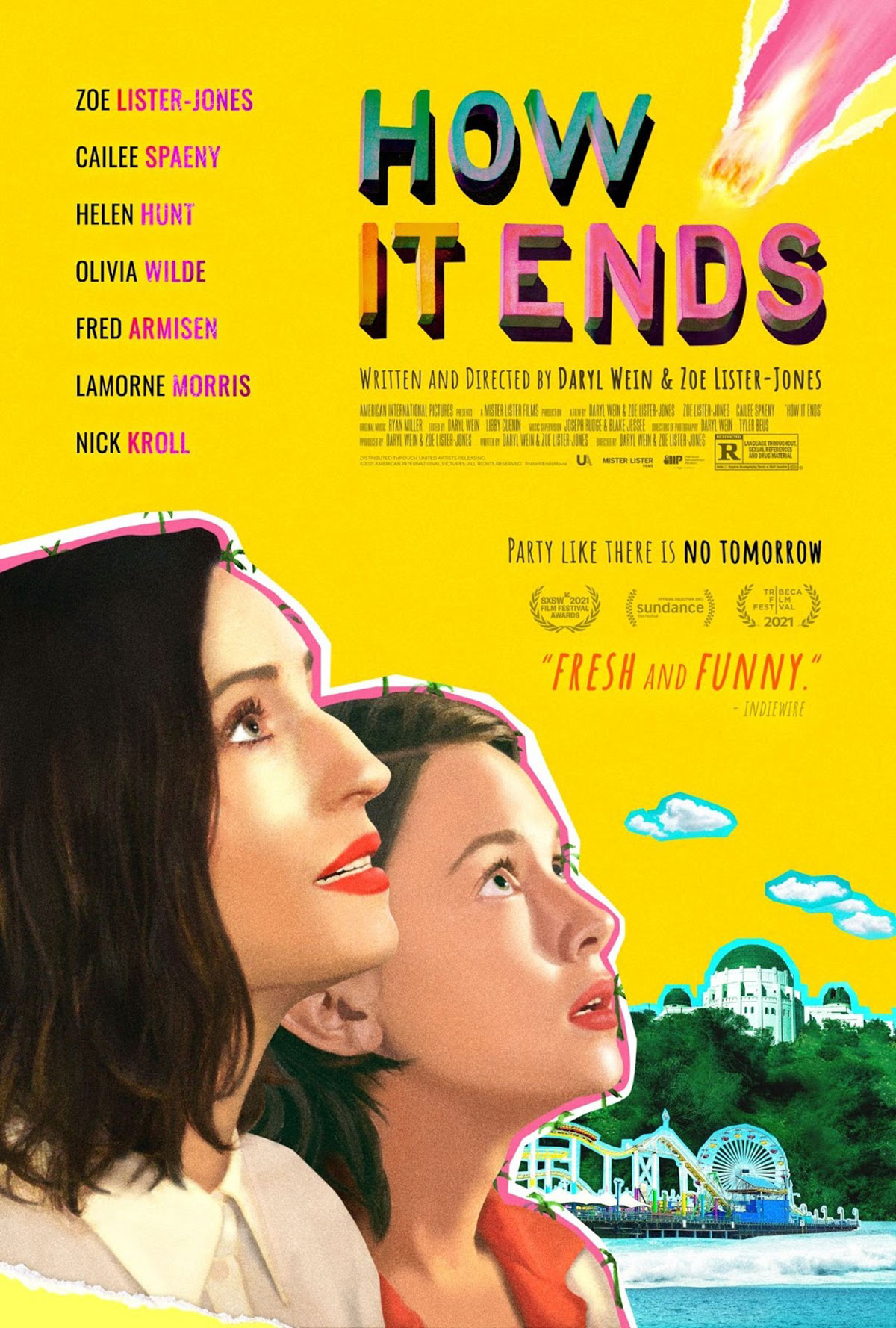
Dir: Z. Lister-Jones / Daryl Wein
Release Year: 2021
Runtime: 1h 22min
The COVID pandemic changed a lot of things. Including film and TV production. You know, lots of shots of a couple people in a room sitting six feet apart. Or a couple people strolling by a secluded lake, also six feet apart. How It Ends takes all of this to its logical conclusion and shows its hand. Or the sausage. Or whatever the term is for exposing the filming limitations by making it part of the experience. But instead of everyone wearing paper masks and sequestering, a meteor is on its way to destroy the Earth in 24 hours. I suppose it’s like a way more comedic Melancholia. Though the background of Los Angeles also affords our random characters some hipster-y pathos as well.
We’ve been re-watching New Girl, and as we entered its Zoe Lister-Jones phase, it made me kind of seek out some other stuff she’s made. She’s funny and specific. Kind of like America’s Phoebe Waller-Bridge. She is the co-writer and director on this movie, along with her now ex-ish-husband, Daryl Wein. I’d hate to think it was this movie that drove them to it, but Hollywood is rough. But the setup is pretty simple. Lister-Jones’ character, Liza, walks around empty LA streets with an avatar of her younger self (Cailee Spaeny) in tow interacting with family, friends, neighbors and strangers as they await the world-ending meteor to crush the Earth. Because of the pressure — or whatever is going on — people are able to see and interact with her younger-self avatar in the same way Liza is able to. You know, to talk about regrets, dreams unfulfilled, smarter approaches to dealing with parental disappointment, etc. The person you were before all the shit weighed you down.
To say there is much more than this overarching framework and a resulting series of short vignettes of Lister-Jones and Spaeny hanging with famous and semi-famous actors would be to exaggerate the concept. The short runtime felt more like the result of the number of participants she could find and the number of minutes they were willing to emerge from their homes and risk exposure to a virus we didn’t quite understand at the time. Some of the discussions are random. Some are pointed. Some are nonsensical. But the dynamic of having the two women (who are actually one woman’s brain) walk the neighborhood, stopping to debate the past and the very, very limited future is where the crux of the story lies. If we, at the end of the world, could have a convo with our younger selves and understand how to get rid of regret, put aside pettiness and move forward from excuses that were holding us back, we’d all head into oblivion in a better place. And, of course, if we could chat with a bunch of folks to confirm all of this, it would be even better.
There is certainly a serendipitous feeling about the film. I wouldn’t say it was exactly similar to something like After Hours, or even the meandering character hand-offs of Slacker, but the kind of strung-together wandering of our main character wasn’t dissimilar. The difference, of course, is that she has no particular place to be (except an end-of-the-world-party that she hems and haws about attending) and nobody joins her on her journey. Because COVID. Watching Lister-Jones hoof it through the hills of Los Angeles in her heels is kind of funny. And Spaeny does a great job of mirroring her nebbishy thing, but has this bizarro way she walks that I thought only I noticed until Lister-Jone’s character actually comments on it. Which means she’s basically commenting on her own weird shambling walk as a teenager. Spaeny is a chameleon, never really looking the same in anything I’ve seen her in — including playing a male character in the awesomely weird Devs. And somehow not looking completely ridiculous as a young Lister-Jones, despite the two not looking at all alike in real life. And the fact Spaeny is 4’11” and Lister-Jones 5’3″. The odds she’d grow that much between her later teen years and her adult self is doubtful, but I’m hardly going to nit-pick that bit of casting. Because they’re both terrific. And while it’s fun to see people like Bradley Whitford, Colin Hanks and Helen Hunt show up, the movie really balances on the two leads pulling off what amounts to a two-hander.
I wouldn’t say the movie is hysterical. It’s amusing and sometimes a little insightful. I mean Fred Armisen shows up to do his Fred Armisen thing — which is a thing I rarely find funny — but otherwise folks keep it pretty low-key goofy and/or hipster chill. Especially with the end of the world nigh. They certainly go for an emotional crescendo, but make sure it doesn’t tip over into melodrama or Streep-level sobbing. I think it’s meant to be a little bit experimental, a little bit cathartic and a little bit fun. And, if you think about it that way, it’s a pretty successful little project. It’s not too heavy, but brings up what amounts to a positive letting go in a time where letting go is almost an impossible task to pull off.


